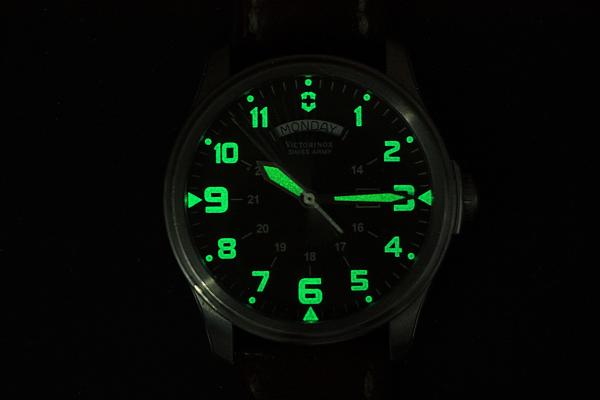You can find Part I of the radium girls saga here.
The statute of limitations was a major obstacle for the legal claims of most of the radium girls, who painted watch dials with radium paints and who were now horribly injured, like Grace Fryer, whose spine had disintegrated from the radium and who, at 27, was forced to wear a solid steel back brace. Grace valiantly went from lawyer to lawyer in a futile effort to find one willing to confront an antiquated legal system that barred lawsuits when the injury manifested after exposure or employment ceased.
Eventually, Grace happened upon Raymond Herst Berry. Berry would later argue that the two-year federal statute of limitations did not begin to run until after the plaintiffs discovered a disease, not from the dates of exposure or employment, as the companies contended. Today that is the legal standard for long-latency diseases. But it took until the mid-1980s, amidst the asbestos and DES litigation, for states to extend the statute of limitations - as Berry suggested in his novel argument 60 years earlier. [1]
Berry filed his case against Grace’s employer, the US Radium Dial Company (USRC) of New Jersey, in May 1927 – just in the nick of time, even under his novel theory. The women had received their diagnoses (and death sentence, as radium poisoning is incurable) two years earlier after wandering around for five years searching for answers, even as the company assured them the job was safe.
Five Women Doomed to Die
“Although its employees were falling sick, the corporation did nothing, USRC did everything it could to obscure the issue and render proper relief to its employees impossible.”
Katheryn Wiley, Consumer’s League. [2]
While Berry lined up experts to testify and marshaled the radiation exposure results of Dr. Martland, the USRC did the same, retaining a Dr. Frederick Flinn to examine the girls. Flinn ran tests, took blood, withheld the results from the workers, and then falsely represented that none suffered radiation poisoning. It turned out that Flinn was a fraud, with a capital F. He was not a medical doctor. His degree was in philosophy – still, he was allowed to testify.
The trial began in January 1928 in Chancery Court [3] before Vice-Chancellor John Backes. It was to be a bifurcated case; the major impediment, the issue of the statute of limitations, would be decided first. If the plaintiffs prevailed, a second trial would determine USRC’s culpability. Berry was pitted against USRC’s stellar team of lawyers, including Edward Markley, who tried to obstruct every piece of evidence Berry tried to admit. But Dr. Drinker’s complete report was ultimately received into evidence, demonstrating the shady tactics employed by USRC. The defense continued their obfuscation during the trial, seeking adjournment after adjournment for months – waiting for the moribund girls to die. They failed.
Ultimately, Chancellor Backes came up with the solution to the statute of limitations’ conundrum. Ruling that the girls’ bones still contained radium and the radium was continuously damaging them, he held that they were continuously being injured, “therefore the statute began tolling each moment of the injury.”
Crashing The Statute of Limitations Bar
The ruling, while innovative, was not precedential - it didn’t impact future litigation. But Backe’s mind-boggling theory is now embodied in today’s toxic tort law via the glass-breaking and precedent-setting case of Keene v. INA, [4] where Judge June Green conjured the same “continuous exposure” theory to implicate insurance coverage of asbestos workers from the time of first employment until the time of diagnosis. There is no hint that Judge Green knew anything about Chancellor Backes’ approach – it seemed to have been an example of “Great Minds thinking alike” and the law taking its time to adjust to modern scientific realities.
Several cases were settled based on Chancellor Backes’ decision, but not all. The USRC included, as part of its settlement, that Attorney Berry would no longer handle cases against it, and they relied on the outcome of future cases, including Irene La Porte’s, to set future, more amenable, precedents.
By 1928, 17 deaths were tied to radium poisoning. It took three more years before the Federal Trade Commission ended the sale of the radiation-tonic “Radiothor,” and the FDA declared radium-based medicines illegal. Radium dial painting, however, continued.
“We have at frequent intervals had thorough…medical examinations made by … technical experts familiar with the conditions and symptoms of the so-called ‘radium’ poisoning….Nothing even approaching such symptoms or conditions has ever been found …..”
Advertisement by the Radium Dial Company
In Ottawa, Illinois, the Radium Dial Company workers read of the mounting New Jersey cases and were alarmed. They, too, were suffering tooth loss and gum infections. To allay the girls’ concerns, Radium Dial decided to examine the girls using Dr. Martland's testing methods. They told the girls the tests were negative.
They also misrepresented New Jersey exposures (who used the same lip, dip, paint procedure to apply the paint), saying their process used pure radium, while the New Jersey outfit used mesothorium (a radium “derivative”).
The town of Ottawa sounded in on behalf of their local employer, along with an editorial by the local paper championing one of its leading industries that had been “ever-watchful’ of their employees’ health. As the depression worsened, supporting local employers became even more imperative.
One family was not convinced. The day after the advertisement ran, Ella Cruse filed suit, and more cases followed. But the women were ostracized by the community and shunned by their neighbors, all more interested in the lucre generated by the plant for the town’s coffers than the health of its citizens.
“The town bitterly resented the… women’s charges as giving a black eye to the community.” [2]
The initial civil lawsuit deriving from the Ottawa exposures, filed in 1935 on behalf of five women, dubbed “walking ghosts” by the press, turned sour as well. The statute of limitations was but one issue. Radium was now considered a poison, and the Occupational Diseases Act didn’t cover poisons. (The Illinois Occupational Disease Act was amended in 1936 – as a direct result of this case to cover industrial poisoning, but it wasn’t retroactive).
In April, the civil court dismissed the case stating that the law failed to establish standards by which compliance could be measured (or what lawyers would call “void for vagueness.”). That the employer knew for several years that the paint was dangerous and continued to expose their employees, that they lied to them about their safety, that they lied to the public, and that they withheld the physical examination results – went unheeded. The company blamed the girls’ condition on their diet and their general poor health; in one case, they falsely implicated syphilis.
Eight months later, Irene and Vincent La Porte of New Jersey lost their case on statute of limitations grounds. The judge wrote:
“Naturally, there is no question as to where the sympathies of any human being would like in a case of this sort. It is tempting, in the light of the knowledge of today, to create the thought that the [company] must have been negligent in some way. But it should be noted that this case must be decided on the facts as they existed in the light of the knowledge of 1917. A court has no power to adjust the law to meet the needs of a time when no such case as this could have been foreseen.” [2]
The New Jersey women were “out of court,” out of luck, and out of money.
Walking Ghosts Arise
There was one lone hope for justice - the case pending before the Illinois Industrial Commission. The five employees of the Ottawa plant, the walking ghosts of the Radium Dial Company, vainly tried to find a lawyer, even beseeching the champion of the underdog, Clarence Darrow, who by now was over 80 and not taking on new cases.
Two days before the scheduled hearing in July 1937, providence led the women to the law offices of Leonard Grossman, who might be said to be the hero of the story. Grossman not only worked pro bono, stayed with the case throughout the innumerable delays and appeals, but funded the case from his own pocket.
Grossman prevailed, overcoming specious arguments that radium was abrasive but not a poison or that the women did not suffer from radiation poisoning. Grossman argued eloquently and vehemently, “denigrating the company’s ‘shameful, shifting, defense, …and the cesspools [of] …their alibis:
‘Language can coin no fitting words of odium with which to condemn the cool, calculating, [Radium Dial Company, workers were] bullied into a false sense of security by dastardly and diaboloical false and fraudulent misrepresentations.” [2]
The judge found in favor of the women, now called “the walking dead,” so pitiful was their appearance. The company appealed. In July 1938, the Illinois Industrial Commission tossed that appeal, and none too soon. The women were on death’s door- and only the living could recover in that venue. That did not stop the company from further appeals, all the way up to the US Supreme Court.
It took ten years for the scientific connection between radium dial painting and disease to be proven – it took another ten for occupational disease legislation to provide basic recovery for those suffering. It took another forty years for the law to accommodate the notion of long-latency diseases and punish wrongdoers with civil damages, bypassing the traditional statute of limitations.
The echoes of the case did not die with the verdict. The current standards for radiation exposure are based on data Dr. Martland collected from the bodies of the radium girls likewise for current environmental standards. In 1979 the EPA ruled that the site of the Orange County plant still had unacceptable levels of contamination. Almost 750 homes had been built atop that site, all needing remediation—more than 200 acres of soil – some upwards of 15 feet deep required decontamination.
[1] New York amended its statute of limitations in 1986 CPLR § 214-c(2)
[2] The Radium Girls, by Kate Moore
[3] Chancery court - Chancery originated in Medieval England as a distinct court of equity named for the Lord Chancellor. Those unable to obtain an adequate common law remedy could petition the King, who would refer the case to the Lord Chancellor. Before 1947, New Jersey’s Chancery court had limited jurisdiction over certain cases such as this one.
[4] Keene Corp. v. Insurance Co. of N. Am., 667 F.2d 1034, 1043 (D.C. Cir.), cert. denied, 455 U.S. 1007 (1981)




